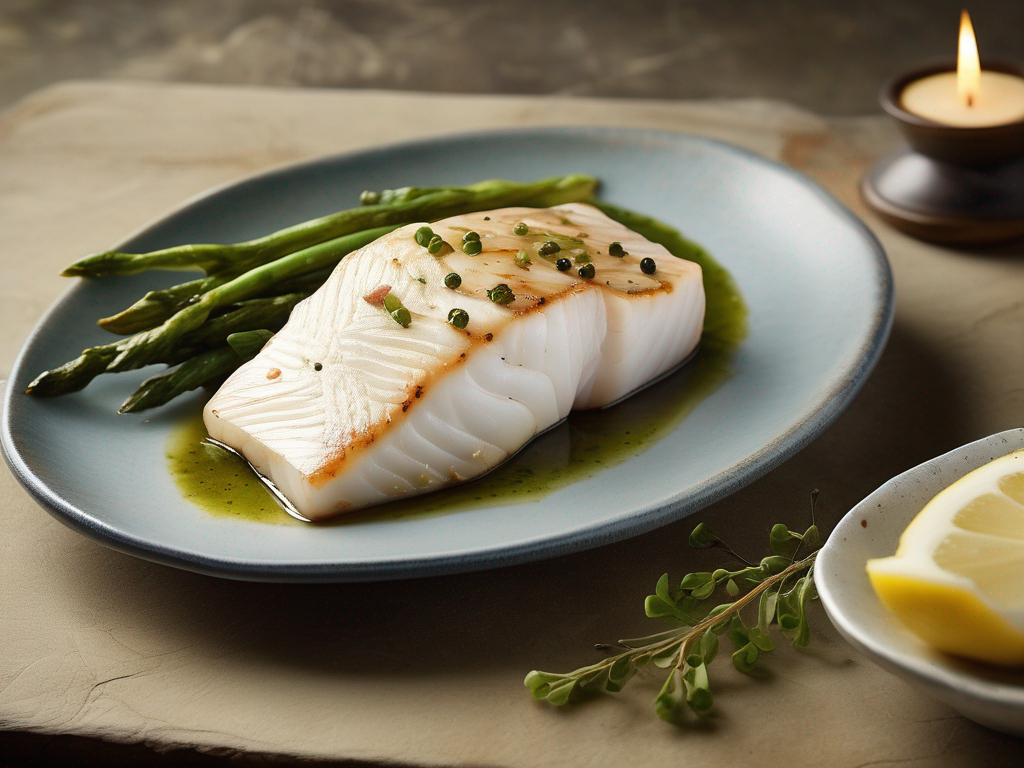
How to Determine if Your Halibut Fresh Cooked Has Gone Bad
Get Your Free Food Safety Cheat Sheet
30 most common foods with instant answers. Print it and stick it on your fridge—completely free!
How to Determine if Your Halibut Fresh Cooked Has Gone Bad
When it comes to seafood like halibut, freshness is key to both taste and safety. As a delicious and nutritious fish, halibut should be enjoyed at its best to avoid any risks of foodborne illnesses. In this blog post, we will discuss how you can tell if your halibut fresh cooked has gone bad, and provide you with essential tips to ensure food safety. (Halibut fresh cooked)
Signs of Spoiled Halibut Fresh Cooked
Halibut is a delicate fish that can spoil quickly if not handled and stored properly. Here are some signs that your halibut fresh cooked may have gone bad:
Appearance
- Color: Fresh halibut should have a vibrant white color. If you notice any discoloration, such as browning or yellowing, it may indicate spoilage.
- Texture: The flesh of fresh halibut should be firm and shiny. If it appears mushy or slimy, it is a sign of spoilage.
- Smell: Fresh halibut should have a mild, briny odor. If it smells fishy or sour, it is likely spoiled.
Taste
- Flavor: Spoiled halibut will have a strong, unpleasant taste. If it tastes off or rancid, it is best to discard it.
Storage
- Expiration Date: Check the expiration date on the packaging. Consuming halibut past its expiration date can increase the risk of foodborne illness.
- Storage Conditions: If halibut has not been stored at the proper temperature (below 40°F or 4°C), it can spoil more quickly.
Tips for Ensuring Halibut Freshness
To prevent your halibut fresh cooked from going bad, follow these tips for proper handling and storage:
Buying Fresh Halibut
- Purchase halibut from a reputable source known for their fresh seafood.
- Look for halibut with clear eyes, shiny skin, and a mild sea smell.
Storing Halibut
- Store halibut in the coldest part of your refrigerator, ideally below 40°F (4°C).
- Use an airtight container or wrap the halibut tightly in plastic wrap to prevent exposure to air.
Handling Halibut
- Wash your hands thoroughly before and after handling halibut to prevent cross-contamination.
- Use separate cutting boards and utensils for raw halibut to avoid spreading bacteria.
Cooking Halibut
- Cook halibut to an internal temperature of 145°F (63°C) to ensure it is safe to eat.
- Avoid overcooking halibut, as it can lead to a dry and unpleasant texture.
Leftover Halibut
- Refrigerate leftover halibut within two hours of cooking.
- Consume leftover halibut within 3-4 days or freeze it for longer storage.
Conclusion
Knowing how to identify signs of spoiled halibut fresh cooked is essential for maintaining food safety and enjoying delicious seafood. By following proper handling and storage practices, you can ensure that your halibut stays fresh and safe to eat. Remember to trust your senses and always prioritize freshness when it comes to seafood like halibut.
For more information on cooking and storing halibut fresh cooked, [click here](/food/halibut fresh cooked). Stay safe and enjoy your seafood responsibly! (Halibut fresh cooked)
Authoritative Food Safety References
These agencies and university labs inform every tip and health precaution we publish.
USDA FoodKeeper – Cold Storage Guidelines
Official refrigerator, freezer, and pantry timelines maintained by the U.S. Department of Agriculture.
Visit USDA FoodKeeperFDA Produce Safety Rule & Grower Guidance
Field-to-fridge handling practices that prevent contamination of fruits, vegetables, and leafy greens.
Visit FDA Produce SafetyCDC Foodborne Illness Prevention Hub
Surveillance-backed guidance on pathogens, symptoms, and steps to reduce foodborne illness risk.
Visit CDC Food SafetyUC Davis Postharvest Technology Center
University research detailing optimal storage atmospheres for produce after harvest.
Visit UC Davis PostharvestPenn State Extension – Home Food Preservation & Safety
Peer-reviewed extension bulletins on safe canning, chilling, and reheating practices.
Visit Penn State ExtensionGet Your Free Food Safety Cheat Sheet
30 most common foods with instant answers. Print it and stick it on your fridge—completely free! Want more? Upgrade to the complete guide with 70+ foods.
Scan your food directly and get instant safety info using our AI-powered camera feature.